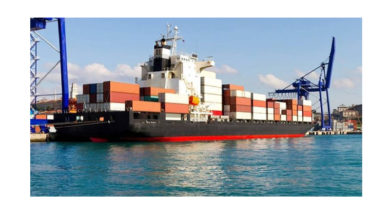This Thing Called Workflow
We see the term Workflow frequently in articles, product marketing pieces, etc. However, if you ask individual people, even in the same company, ‘what their workflow is,’ you will get different answers. This is important to note, since a workflow is just a series of connected processes. That means that perspective and roles offer a differing view of what constitutes a workflow. Each workflow has a specific purpose with specific benefits to your company. The advantage of using the PRIMIR Transformative Workflow model as a reference is that it allows you to see the various workflows broken into a logical hierarchy as well as how they work together within a holistic system. The key here is that they ultimately need to work together in order to give you the maximum flexibility and benefit for growth.
In the last article  (published march 2014- issue 111), we took a high level look at the overall structure of the MIS (Management Information System) or ERP (Enterprise Resource Planning) systems as they relate to the PRIMIR model. There is an old saying: “If you can’t measure it, you can’t manage it.” In todays economy, and when looking at transforming a business, this statement has even more significance. While print solution providers rightfully tend to focus on production and the purchase of new and efficient hardware, it is equally important to have a business and information infrastructure that can support your current and future business and production processes. In this article, we look at packaged business management products. We will be covering unbundled business solutions and production workflow technologies and products in future articles. That being said, what are the some of the things you need to know about packaged solution options that can support your business infrastructure?
(published march 2014- issue 111), we took a high level look at the overall structure of the MIS (Management Information System) or ERP (Enterprise Resource Planning) systems as they relate to the PRIMIR model. There is an old saying: “If you can’t measure it, you can’t manage it.” In todays economy, and when looking at transforming a business, this statement has even more significance. While print solution providers rightfully tend to focus on production and the purchase of new and efficient hardware, it is equally important to have a business and information infrastructure that can support your current and future business and production processes. In this article, we look at packaged business management products. We will be covering unbundled business solutions and production workflow technologies and products in future articles. That being said, what are the some of the things you need to know about packaged solution options that can support your business infrastructure?
Packaged Business Management Solutions
Lets start by looking at the difference between an ERP system and an MIS system. Outwardly their functionality may look similar, but they are very different in how they operate internally. In the case of an MIS system, the modules usually maintain their own information and it is exchanged directly between the modules as needed. An ERP system usually has a centralized database, and the individual module processors are connected to it. So the information is exchanged through the database instead of module to module. Having a centralized database ‘usually’ makes for a more flexible system, but also adds cost to the overall solution. Even in some of the product offerings described below, while the ERP/MIS designation is fairly clear, the implementations may not be as well defined. In terms of connectivity with external applications and processes, most of the credible MIS and ERP systems for the print industry include support for JDF/JMF, although you should be aware that not all JDF/JMF support is equal. We will be covering JDF/JMF in more depth in a future article. In addition to JDF/JMF, many also include APIs (Application Programming Interfaces) for varying levels of external process integration.
Varying Designs and Functionality
As I travel around the globe working with companies on transforming, optimizing, and automating processes, I see a wide range of tools and methods being used to manage business processes, ranging from Excel spreadsheets to full-blown ERP systems. It’s good to understand that most MIS and ERP packages in the market were initially developed for ‘a’ specific printer’s requirements and then further extended and developed to support the requirements of a wider audience of printers. Many of the core modules we identified in the last article, are available in some form in all of the available systems; however, the needs of a small ‘quick printer’ are not the same as those of a larger commercial printer, or a packaging printer, etc. Although you can usually force fit almost any solution into a company, since many systems are tailored and better suited to a certain set of requirements, you need to identify the best fit to suit your needs.
It would be a huge task to discuss all of the print business management solutions available in the market today, but I wanted to highlight some of the key differences and issues you may need to consider when reviewing solutions. So I have described, at a very high level, a select number of representative solutions.
Hiflex has been in the market since 1991. In 2011 HP acquired the German MIS solution provider. Hiflex has been instrumental in the development of the JDF/JMF interactivity specification with CIP4, and as a result, they have been recognized with17 awards to date for their efforts. HP no longer sells Hiflex. However existing customer continue to receive support from HP. Another long time player in this space is Avanti Systems, founded in 1984 with over 400 installs around the globe. They offer their Avanti Print MIS solution, a very mature and robust product.
By far, EFI has the largest selection of business management solution packages covering a very wide cross section types and requirements for print service providers. They currently offer PrintSmith Vision, designed for copy centers, print for pay, small commercial shops, etc. Their mid range package is the scalable EFI Pace MIS solution, which is more robust and designed for mid-sized commercial print providers. The EFI Monarch ERP solution is their flagship solution that is designed for mid to large sized printers and multi-site printers. EFI has primarily grown market share over the years through the acquisition of many of the market solution providers, migrating them into the existing EFI product line. One of their more recent acquisitions is EFI Radius. This ERP solution is designed for the business management of a packaging converter, with modules that are specifically tailored to those requirements.
Not all ERP solutions operate the same or have the same levels of flexibility for integration with other systems. Some ERP systems use their own database and platform for development, and some use more standardized and widely used platforms. As an example, there are a number of Print ERP systems that have been developed with Microsoft Dynamics. Having MS Dynamics as the core development platform brings many built-in advantages, including integration with other MS business applications, multi language support, etc. However there are two different MS Dynamics implementations: NAV and AX. In the case of MS Dynamics NAV, the applications are developed ‘on top’ of NAV and generally targeted at small to mid-sized businesses.
A good example of an ERP system built on NAV is NovaVision PrintVis. Those developed ‘inside’ MS Dynamics AX are usually designed for larger multi-site enterprises and offer significant flexibility to develop and integrate against. Of course, that flexibility comes with a higher price tag and increased support and resource requirements. A good example of this type of solution would be uxc eclipse DynamicsPrint.
Rent, don’t buy?
Software as a service (SaaS) isn’t new, but it is one of the fastest growing solution segments in the print MIS space. The advantages of this type of solution over an on-site installed solution include reduced initial investment and reduced ongoing support costs, amongst other advantages.
Most of these solutions usually are comprised of a subset of the same MIS/ERP functionalities that have been discussed in this series. Many of these offerings were initially developed to support web-to-print workflows in small to mid-sized print shops, so they may not offer the extensive set of modules in a locally installed system. We will cover web-t- print in depth in a future article. One example of this type of solution is a cloud-ported version of the previously mentioned Hiflex.
Another popular cloud solution is Presswise, a fairly unique and very graphic offering focused on production automation. And finally, SimpleFlow is a solution that has a strong focus on managing information and processes.
So as you can see, there are many options in determining the best way for you to implement a good business management infrastructure in your business. Just remember that whatever solution you choose does not, and cannot sit in a silo. It needs to be an integral part of the more complete PRIMIR model to get the most benefit and to provide the best infrastructure upon which to build your present and future.

Production infrastructures: The evolution of the DFE
Previousely , we looked at some of the basic technology and representative products you could use that could comprise the business and information management layer of the PRIMIR Transformative Workflow diagram we are using as the basic model for our workflow transformation discussion. As described at the start of this series, we are covering the basics with some detail, without getting too far into the weeds, since that’s usually where your individual company requirements and the individual product features need to be closely matched. But the information in these articles provides a good starting point. There are many other products that could be considered in the business and information management layer. We expect to cover many more of them, along with the necessary workarounds, once we finish covering the basics and move on to the more tailored workflow solutions and implementations in future articles.
Now it’s time to start looking at the production workflows, their roles, requirements, and last but not least, how they will work together with the other workflow layers that have been identified in the PRIMIR model. We are going to start this discussion with the heart of any digital output system, the DFE.
The core piece of any digital production workflow is the DFE (Digital Front End). DFE’s have been around long before digital presses, but we used to call them RIPs. Technically, the RIP kernel is at the heart of the RIP controller. The RIP controller drives filmsetters, platesetters, proofers, etc. The role of a RIP controller or the DFE is twofold: First to present an incoming communication link to receive a file, and then to interpret the incoming PDF file (or historically, PostScript, or raster image file) into a bitmap file at the proper resolution that can be used to image on film, plate, paper, or other media. The other core function is to communicate that processed information to, and directly control, the output device as shown below.
At the heart of every DFE is an interpreter. In the past, this has been a RIP (Raster Image Processor) kernel which interpreted the file and then wrote the bitmap for imaging. In recent times we are seeing PDF libraries that perform a similar function, which is interpreting/processing the incoming PDF file into a bitmap. While early in the life of digital prepress there were many interpreter core developers , for many years now there have been two primary manufacturers of the RIP kernel or PDF libraries; Adobe with its PDF Print Engine (APPE) and Global Graphics (Harlequin and JAWS). This interpreter kernel is ‘the’ critical piece of the RIP/DFE since it actually does the translation from PostScript or PDF code into the bitmaps that print.
These kernels get updated on a regular basis to keep up with standards developments and other changes in market requirements. In fact, many of the problems that print service providers still have in correctly processing client files can be traced to either older interpreters or incorrect RIP/DFE settings. Additionally, not all RIP/DFE vendors develop around the same interpreter core the same way, which can also lead to differences in output. The various RIP and DFE vendors such as Agfa, Canon, EFI, Heidelberg, HP, Kodak, Océ, Ricoh, Xerox, and the others build their software around this core technology. Some of them add additional ‘value added’ features to replace or supplement the core kernel technology. This has the potential to create different output from different vendor software, even those using same version of the kernel. Both Adobe and Global Graphics usually stress to their OEM partners that this might present difficulties, and in fact, have they increased the feature sets in their RIP kernels to influence their OEMs to not behave in that manner. So you should be aware of DFE software updates and ensure that you are up to date and using the correct/optimal settings, which are not always what ships or installs, by the way…
The Ghent Workgroup (www.gwg.org) has been studying these problems for more than 10 years and has developed setting files in conjunction with many of the creation application and output device (RIP/DFE) vendors. Additionally, GWG has created a suite of test files that can be used to check your workflow and settings to ensure good file creation and output. GWG strongly recommends that you keep your creation software and RIP/DFE software up to date, since these updates help keep up with the many new changes and features in your clients’ creative software and also include bug fixes. It has been proven that the cost of keeping your software up to date is much less expensive than the costs associated with jobs going bad and the troubleshooting and workarounds that operators are forced to undertake to overcome this.
 In addition to the interpreter core vendors adding features, over the years RIP/DFE vendors started to expand features beyond the core functions. New features added include various levels of JDF/JMF support, broader support of file types, variable data support, color management, trapping, imposition, and a number of other things that we will look at in future articles. Many of these functions were added to allow the output device vendor to offer a more complete solution when selling platesetters, digital presses, proofers, etc. The problem with these ‘fully featured DFE’s’ arises when print service providers try to automate and optimize their entire production system to support new product and service offerings, or when integrating output devices from disparate vendors.
In addition to the interpreter core vendors adding features, over the years RIP/DFE vendors started to expand features beyond the core functions. New features added include various levels of JDF/JMF support, broader support of file types, variable data support, color management, trapping, imposition, and a number of other things that we will look at in future articles. Many of these functions were added to allow the output device vendor to offer a more complete solution when selling platesetters, digital presses, proofers, etc. The problem with these ‘fully featured DFE’s’ arises when print service providers try to automate and optimize their entire production system to support new product and service offerings, or when integrating output devices from disparate vendors.
What they can find is a great deal of feature disparity and overlap, and that problem increases as the number and variety of output devices in their plant increases. This can lead to unexpected or inconsistent output across their many installed devices.
In fairness to the DFE vendors, all of this was done with the intention of giving the user almost everything you would need when you purchase one of these output devices, and if you only have one device or one version of one brand, it could be exactly what you need. However if you have multiple devices, especially from multiple vendors—which is true in most plants today—it could present a problem. Many of the DFE vendors have recognized that the problems I have highlighted here do exist, and in an effort to address them, they have started to create bridge solutions, either as standalone applications or as a part of their DFE offerings. But does that really solve the problem? Stay tuned….
In the next article in the series, we will take a look at some representative examples of the RIP and DFE software available to support the output devices and their included workflows. We will also look deeper into the problems that can occur when there is disparity and overlap of DFE features in disparate vendor solutions. We will also look at whether and how they support integration with the business and information management software we have previously discussed in this series. Remember, if you have any topics you think are important and would like us to cover during the balance of this series, please let us know!
David Zwang, travels around the globe helping companies increase their operational productivity, margins and market reach. With over 40 years of industry experience, David specializes in process analysis and strategic development for firms in the fields of publishing, design, premedia, and printing.
You can contact David via email at [email protected].





